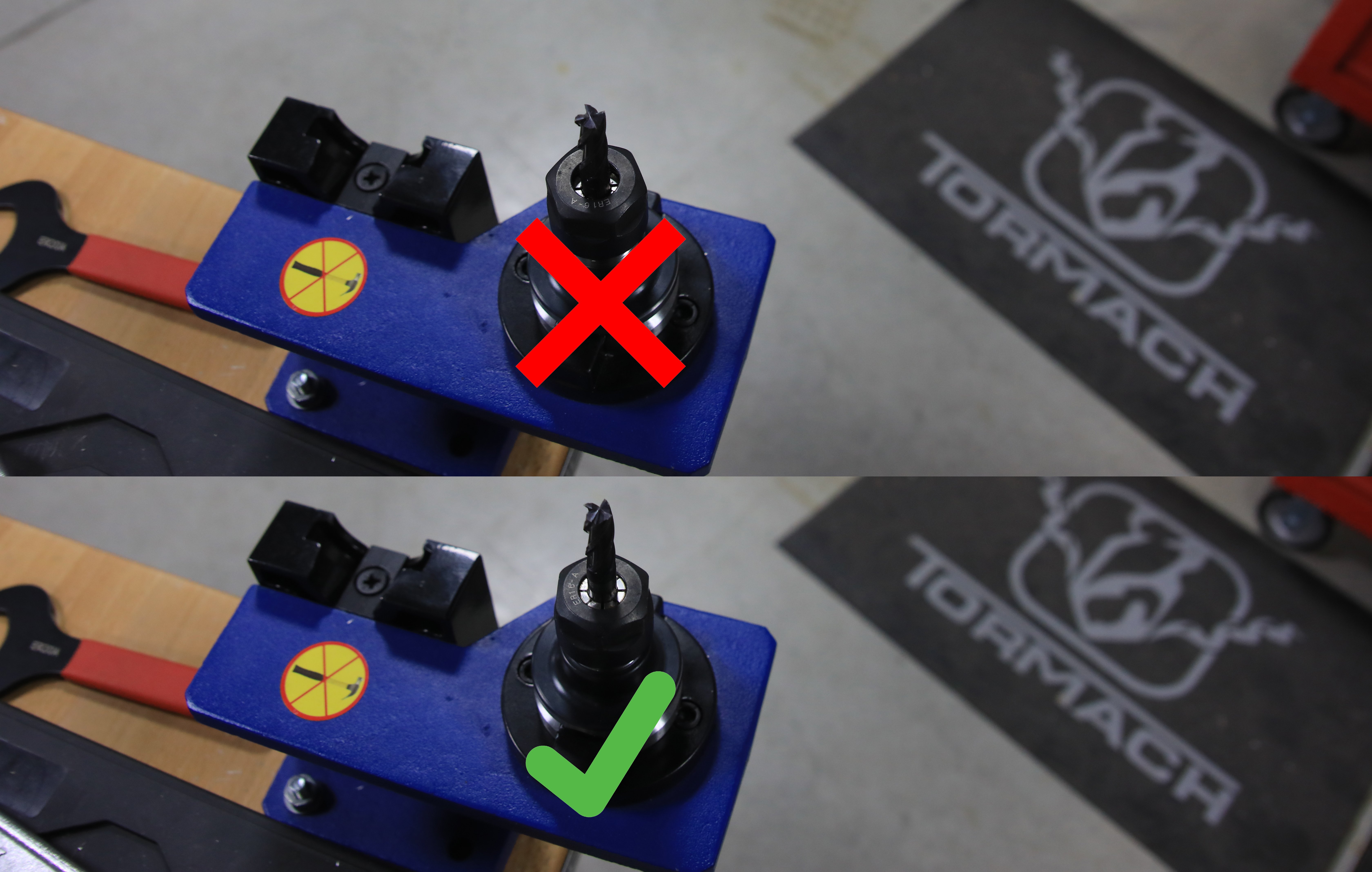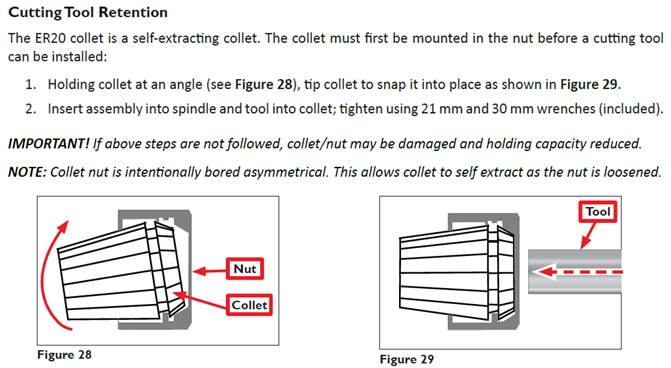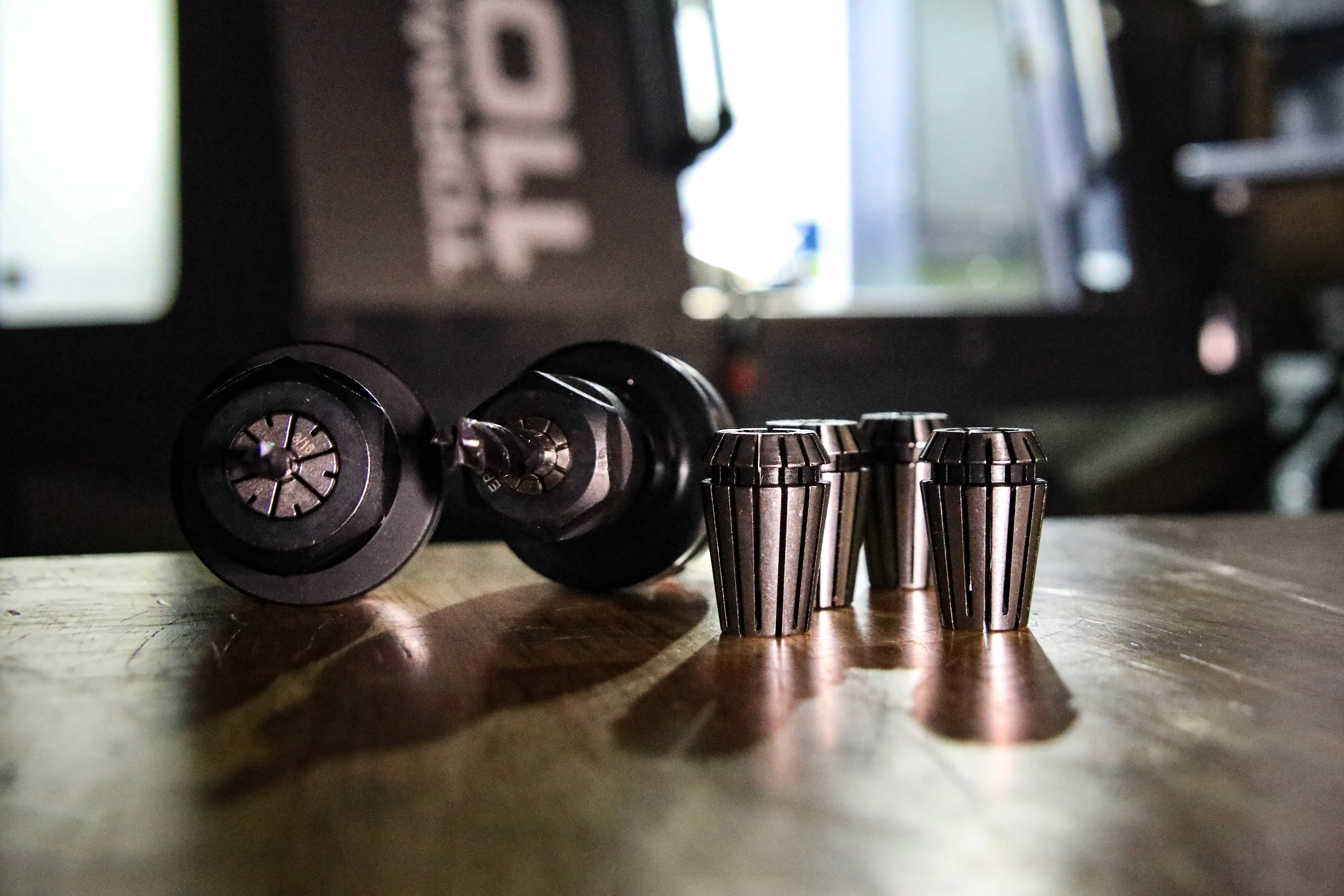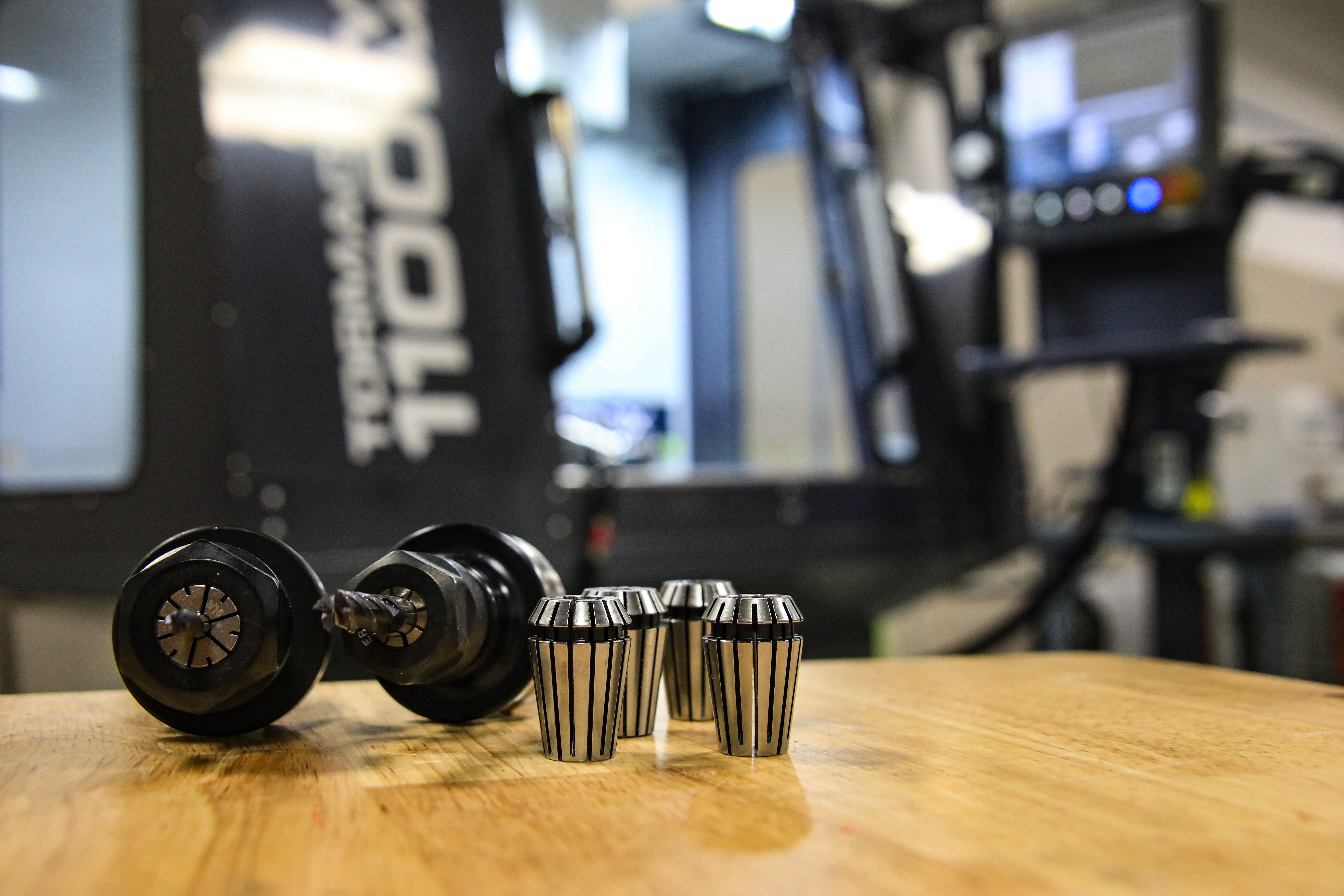Since their development in 1973, ER Collets have become an essential element of every machine shop. Whether you’re looking to hold tooling or even round stock, these collets are an industry-standard for machine work.
Standards of ER Collets
These collets are usually found in a standard series as: ER-8, ER-11, ER-16, ER-20, ER-25, ER-32, ER-40, and ER-50. The numbers represent the opening diameter of the tapered receptacle in millimeters. As you tighten the nut on your holder, the ER collet collapses together to hold round tools or stock from 0.5-2 mm (or 0.0197-0.0787 in., depending on collet size) smaller than the collet internal diameter.
While the initial ER system is based in metric, there are ER collets available with imperial sizing as well.

What Size ER Collet Do I Need?
The short answer to the question, “what size ER collet do I need?” is: the whole series. The real strength of ER collets is that they collapse down to fit whatever you’re trying to hold, but a single size can’t hold everything.
Because the diameter only collapses down from 0.5-2 mm (depending on the collet size), having a set sized in a variety of increments allows you to hold any tool in the collets series clamping range. Keep in mind that the closer your tool is to the nominal collet size, the more accurately it will clamp it, so having those intermediate sizes can prove helpful, especially when you are using ER collets to hold drills. Runout is important in a drill situation, and having a collet as close to your drill size will help you keep your runout to a minimum .
Having a large array of ER collets in your arsenal is important. They are a very versatile holder offering a wide clamping range. Other tools holders like the setscrew, heatshrink, or milling chucks can offer you an even higher level of rigidity and precision, but don’t offer this versatility since they are limited to a single size.
Another important detail with ER collets that is commonly overlooked is how tight do you go. It’s a running joke that the torque spec was German... Goutensnug… But in practice the torque to which you tighten the nut ensures you have proper clamping on the tool. Overtightening the nut can cause damage to the collet, as well as poor tool runout.

Properly Setting Up an ER Collet
ER collets seem simple, but there are several ways to misinterpret the mechanical simplicity of these holders.
To a new machinist, these clamping nuts may even appear to be manufactured incorrectly, due to the offset lip inside the collet (sometimes this is a loose collar, rather than an offset). This is designed into the collet nuts and without it you would not be able to insert the collet into the nut
The key is to fully engage (clip in) the collet inside the nut before you tighten it onto the holder. When properly seated, your collet face should be flush with the face of the nut - almost press fit into the nut. At that point, you’re ready to place your tool into the collet and tighten things into the holder.

There are two common types of collet nuts that secure the collet into your holder and help to close the collet itself. A standard collet nut is pretty straight forward it uses a one-piece nut with all the features to retain and clamp the collet machined into it, whereas a ball bearing clamping nut has multiple pieces, increasing the complexity and price. The advantages of using a ball bearing clamping nut is increased clamping force. More often than not, the ball bearing clamping nuts are only needed in special use-case situations.
Holding an End Mill (or Other Tools/Stock)
To get the best hold when placing your tool or stock into an ER collet, it’s best to have as much of the tool engaged with the collet as possible. If possible, having the tool run at least the entire length of the collet is ideal.
This provides two major benefits that are really one in the same. First, holding power.
Obviously, you want your tool to stay in the collet. The more of the collet you have gripping the tool, the more secure it will be. Having more holding power not only keeps the tool from pulling out while machining but also can help reduce your tools runout.
Second is rigidity.
No matter what space you are in or what machine you are using, the more rigidity you can get the better. Having more holding power on the tool itself translates to less runout on the end mill as you are cutting. Better rigidity means faster cuts, longer tool life, and better surface finish.

If you’re a new machinist and looking to add accessories to your machine, one of the best purchases you can make is a robust set of ER collets. Starting with a full set allows you to hold just about any tool and then you can add the common sizes you need multiples. It’s a good idea to have a handful of each size for the common tooling sizes in your toolbox.


